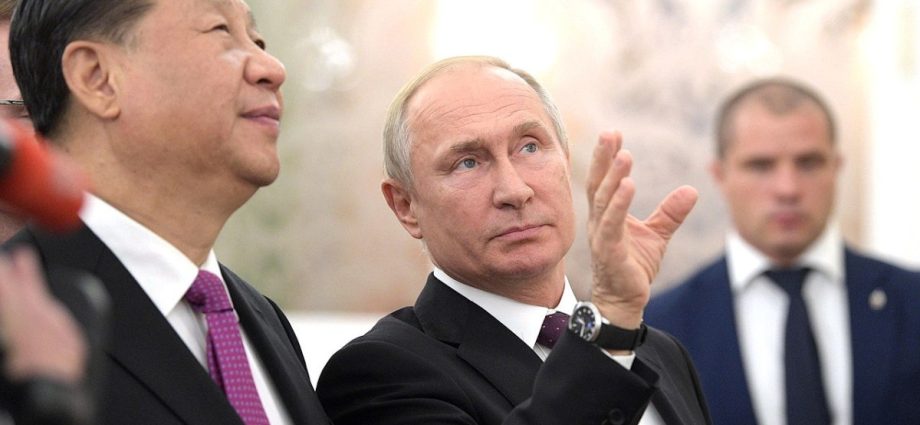China’s nuclear buildup may spur the US to consider rearming its land-based nuclear missiles with multiple warheads, a move that would have significant implications for strategic stability and breach a crucial arms control treaty with Russia.
The Warzone reported that the US Strategic Command (STRATCOM) has called for a return to deploying intercontinental ballistic missiles (ICBMs) with multiple independently targetable reentry vehicles (MIRVs).
The report notes that the US Air Force’s LGM-30G Minuteman III ICBMs have this capability though they are currently only loaded with one warhead in line with arms control agreements with Russia. The service’s future LGM-35A Sentinel ICBMs will also be armed with only a single warhead.
US STRATCOM boss US Air Force General Anthony Cotton highlighted the importance of considering a return to deploying ICBMs with MIRVs while testifying before the Senate, according to The Warzone.
The Warzone report says that the US Strategic Posture Commission recommends a “plan to deploy the Sentinel ICBM in a MIRVed configuration.”
However, it notes that the current plan is for each LGM-35A ICBM to be loaded with a single W87-1 nuclear warhead inside a Mk 21A reentry vehicle when the missile enters service, which is expected to begin in the 2030s.
The 2010 New START treaty, which limits how many total strategic warheads and delivery platforms the US and Russia can have deployed at any one time, has until now stopped the US from deploying MIRVed ICBMs.
China’s accelerated nuclear weapons buildup may be the immediate impetus for the US to reconsider deploying MIRVed ICBMs, with Russia providing nuclear technology to China in the two sides’ “no limits” strategic partnership.

In April 2022, Asia Times reported that while China has 350-400 nuclear warheads compared to the US’s 5,500, China has plans to double its arsenal to 700 warheads by 2027 and 1,000 by 2030. China is believed to have achieved a strategic breakout in quantitative and qualitative nuclear capabilities.
Its new air, land and sea-based nuclear delivery systems, including hypersonic weapons, air-launched ballistic missiles (ALBM) and newer submarine-launched ballistic missiles (SLBM), have strengthened its coercive nuclear strategy.
That strategy may involve using nuclear threats as strategic cover and backstop for conventional military operations, deterring US and allied intervention in a potential Taiwan conflict.
Furthermore, Asia Times reported in March 2023 that Russia plans to provide fast breeder nuclear reactor technology to China. In December 2022, Russia transferred 25 tons of highly enriched uranium to China’s CFR-600 nuclear reactor, which is estimated to have the capacity to produce 50 nuclear warheads a year.
The CFR-600 is believed to play a critical role in increasing China’s nuclear warhead count from 400 to 1,500 by 2035, with 700 warheads sufficient for China to have second-strike capability with options for limited theater-level nuclear strikes.
For Russia, the transfer of nuclear technology gives it an alternate source of revenue aside from heavily sanctioned energy exports and arms exports in light of the ongoing Ukraine war.
In the case of China, evolving US missile defenses, power posturing and the need to increase the survivability of its nuclear deterrent have driven the expansion of its nuclear arsenal.
Any US decision to rearm its land-based ICBMs with MIRVs would pose significant strategic and operational implications.
Asia Times noted in November 2023 that MIRVed ICBMs can destabilize strategic security as one missile can hit multiple targets, enabling countries that have them to launch various warheads at a single target, with numerous lower-yield warheads being more destructive than one warhead with equivalent yield. They are also more challenging to defend against.
MIRVed ICBMs create a “use them or lose them” scenario since one first strike against these missiles can destroy a large proportion of the target country’s ability to retaliate.
Ryan Snyder argues in a March 2018 Arms Control Association (ACA) article that the deterrent value of US land-based ICBMs is small and diminishing. He notes the probability of a Russian missile destroying a Minuteman III silo could exceed 98% given improvements in inertial guidance, satellite navigation and maneuvering reentry vehicles (MaRV).
Snyder also notes that eliminating land-based ICBMs in favor of a sea-based nuclear deterrent could spare millions of American lives in a nuclear conflict.
Despite the debate surrounding MIRVed ICBMs, Hans Kristensen and Matt Korda note in a January 2023 Bulletin of Atomic Scientists article that the US is modernizing its entire nuclear arsenal to maintain strategic deterrence, reassure allies and partners, and achieve US objectives if deterrence fails.
Kristensen and Korda note that the US Air Force occasionally test-launches Minuteman III ICBMs with unarmed MIRVs to maintain the latter capability.
They point out that the US did one such test in September 2022 where the US Air Force launched a Minuteman III ICBM with three unarmed MIRVs from Vandenberg Space Force Base, with the missile traveling 6,759 kilometers to a test range at Kwajalein Atoll in the Marshall Islands.
However, a more significant challenge may be the production of new nuclear warheads for MIRVed ICBMs rather than the MIRVs themselves.
Asia Times reported in January 2024 that while the US has been building new nuclear delivery systems since 2010, nuclear warhead production hasn’t kept pace, with the latest W-88 nuclear warhead entering service in 1989 and the B-61 nuclear gravity bomb first coming off the assembly line in 1963.
Although the US can use plutonium from decommissioned warheads in new ones, over time, microscopic changes in plutonium can affect the storage safety and yield of nuclear weapons.

Meanwhile, older US nuclear plutonium pits, which are the spherical core of implosion-type nuclear weapons, may not give the desired yield when used in newer weapons.
While the US must produce 80 plutonium pits by 2026 to modernize its nuclear arsenal on a one-to-one basis, current production capacity means that it won’t have 80 pits annually until 2030 and possibly not until 2040.
The shortfall can be explained by post-Cold War complacency, lack of skilled nuclear workers, aging nuclear infrastructure and restrictive environmental regulations surrounding plutonium processing.

